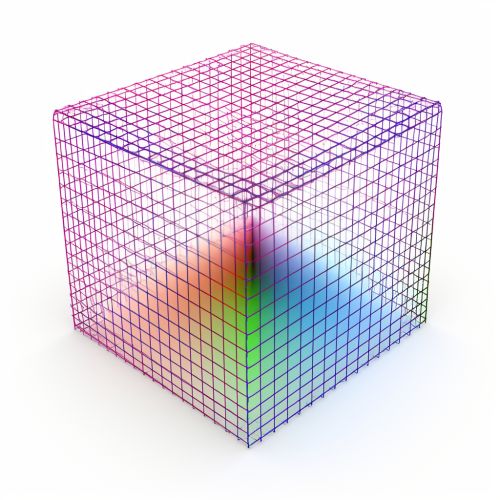Coordinate system
Introduction
A coordinate system is a system that uses one or more numbers, or coordinates, to uniquely determine the position of the points or other geometric elements on a manifold such as Euclidean space. The order of the coordinates is significant, and they are sometimes identified by their position in an ordered tuple and sometimes by a letter, as in "the x-coordinate". The coordinates are taken to be real numbers in elementary mathematics, but may be complex numbers or elements of a more abstract system such as a commutative ring.
Types of Coordinate Systems
There are several common coordinate systems used in mathematics and physics, each with its unique advantages and disadvantages.
Cartesian Coordinate System


The Cartesian coordinate system is the most familiar, representing geometry in terms of x, y, and z coordinates. It is named after René Descartes, who introduced it in the 17th century. This system is used in physics, engineering, and computer graphics because of its simplicity and ease of use.
Polar Coordinate System
The polar coordinate system is a two-dimensional coordinate system in which each point on a plane is determined by a distance from a reference point and an angle from a reference direction. This system is commonly used in navigation, physics, engineering, and many other fields because of its ability to easily represent rotations and radii.
Cylindrical Coordinate System
The cylindrical coordinate system is a three-dimensional coordinate system that extends the two-dimensional polar coordinate system to three dimensions by using two horizontal axes, an azimuth angle, and a vertical z-axis.
Spherical Coordinate System
The spherical coordinate system is a three-dimensional coordinate system where a point in space is represented by three coordinates: two angles and a distance from the origin. This system is commonly used in physics, particularly in fields like electromagnetism where systems are naturally spherical.
Transformations between Coordinate Systems
Transformations between coordinate systems are often necessary in the fields of mathematics and physics. The transformation equations are the relations between the coordinates of the same point in the two systems. For example, the transformation from Cartesian coordinates to polar coordinates involves the use of trigonometric functions.
Applications of Coordinate Systems
Coordinate systems are used in a wide variety of fields, from mathematics and physics to engineering and computer graphics.
Mathematics
In mathematics, coordinate systems are used to describe the location of points in a space of given dimensions. They are also used to describe the shape of objects, such as curves and surfaces.
Physics
In physics, coordinate systems are used to describe the position and movement of particles in space. They are also used to describe the shape and orientation of objects.
Engineering
In engineering, coordinate systems are used in the design and analysis of mechanical systems. They are also used in the control of manufacturing processes, such as CNC machining.
Computer Graphics
In computer graphics, coordinate systems are used to describe the position and orientation of objects in a virtual world. They are also used in the manipulation of these objects, such as in animation and modeling.
